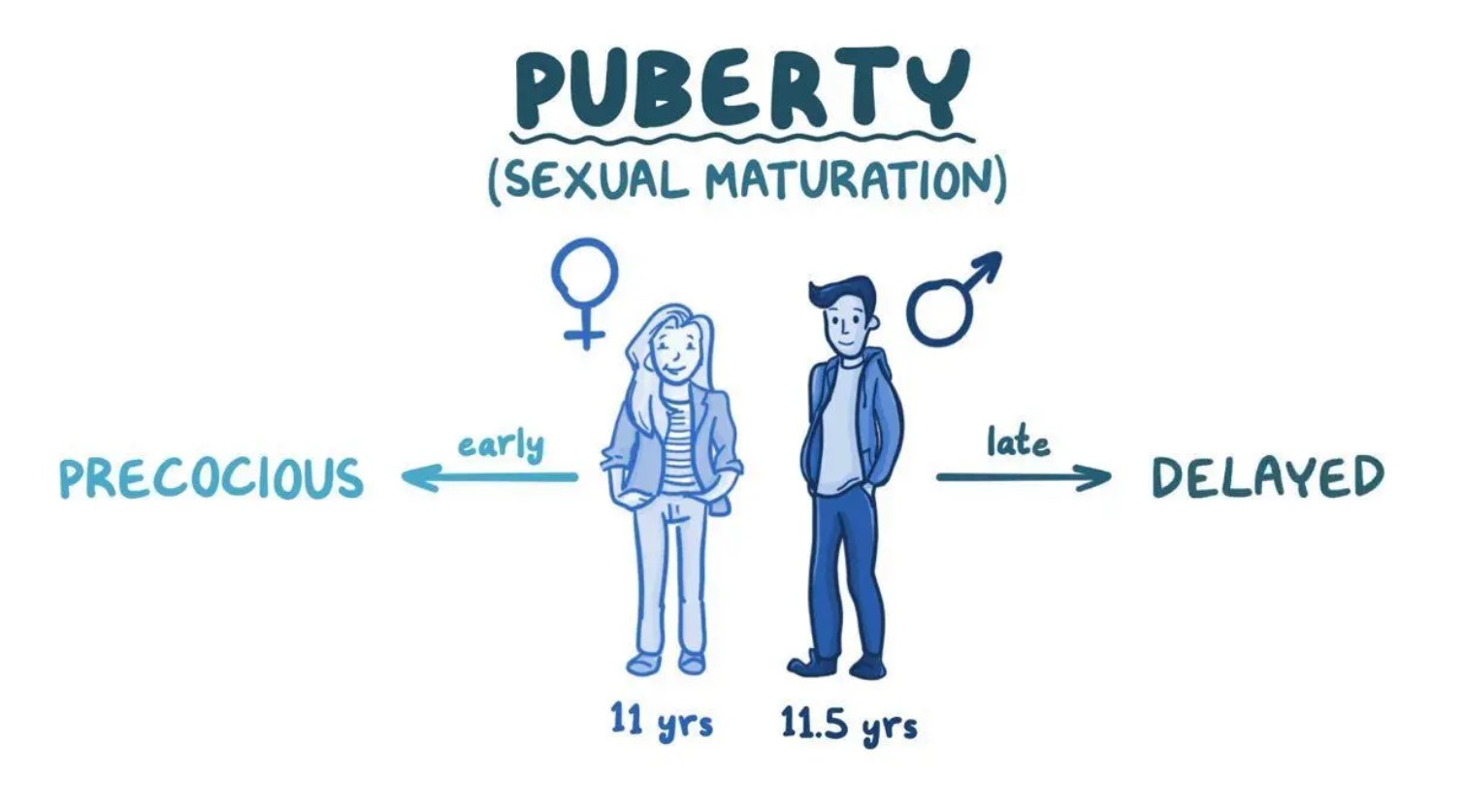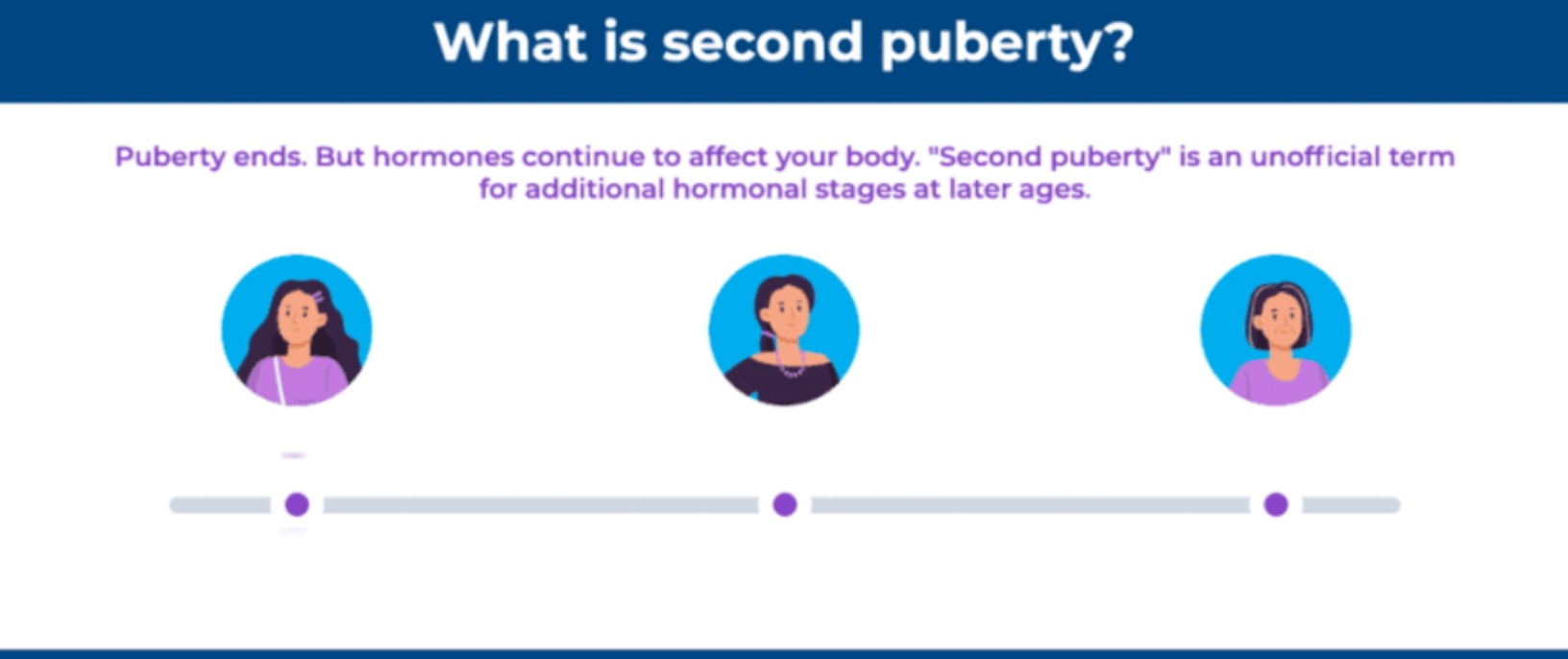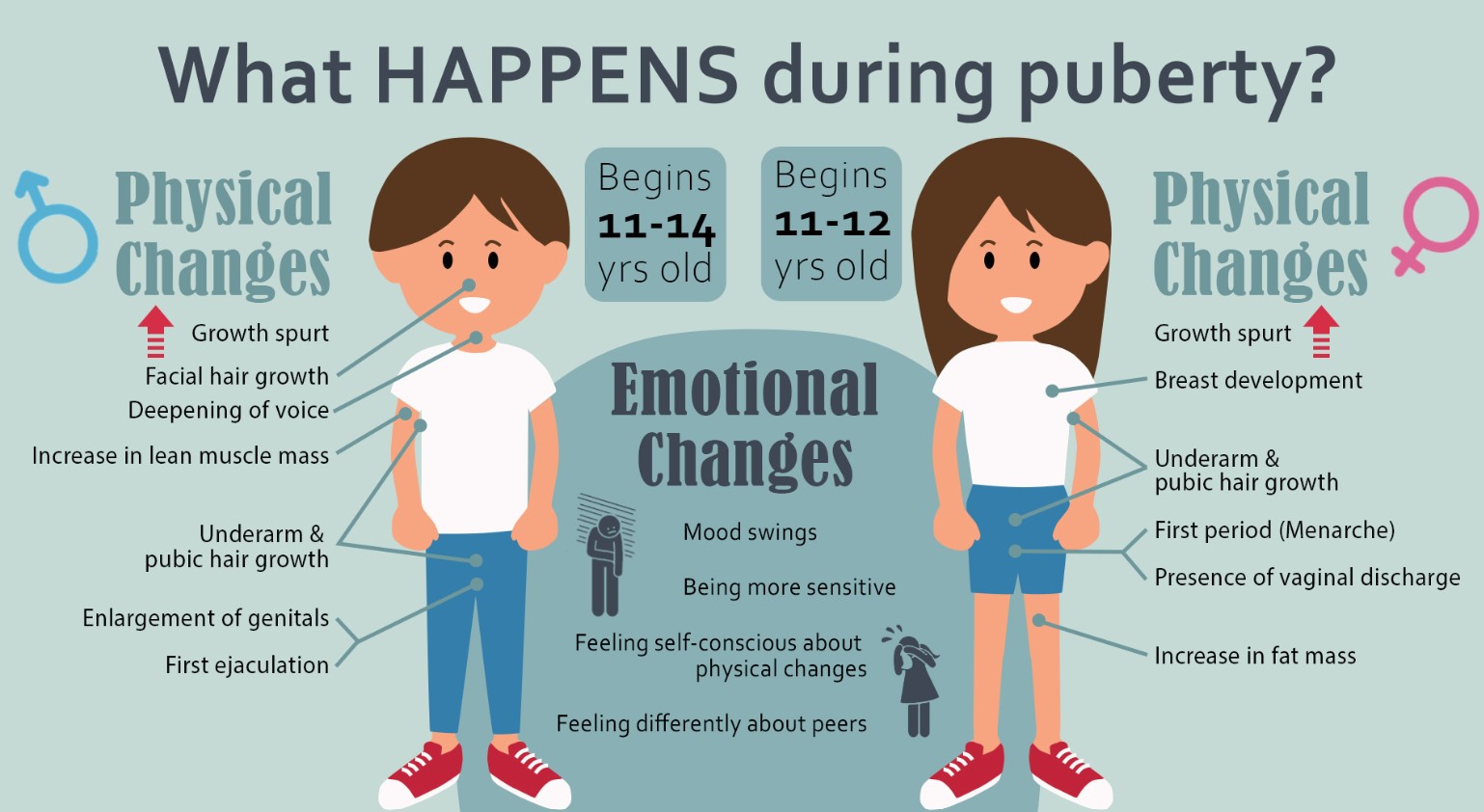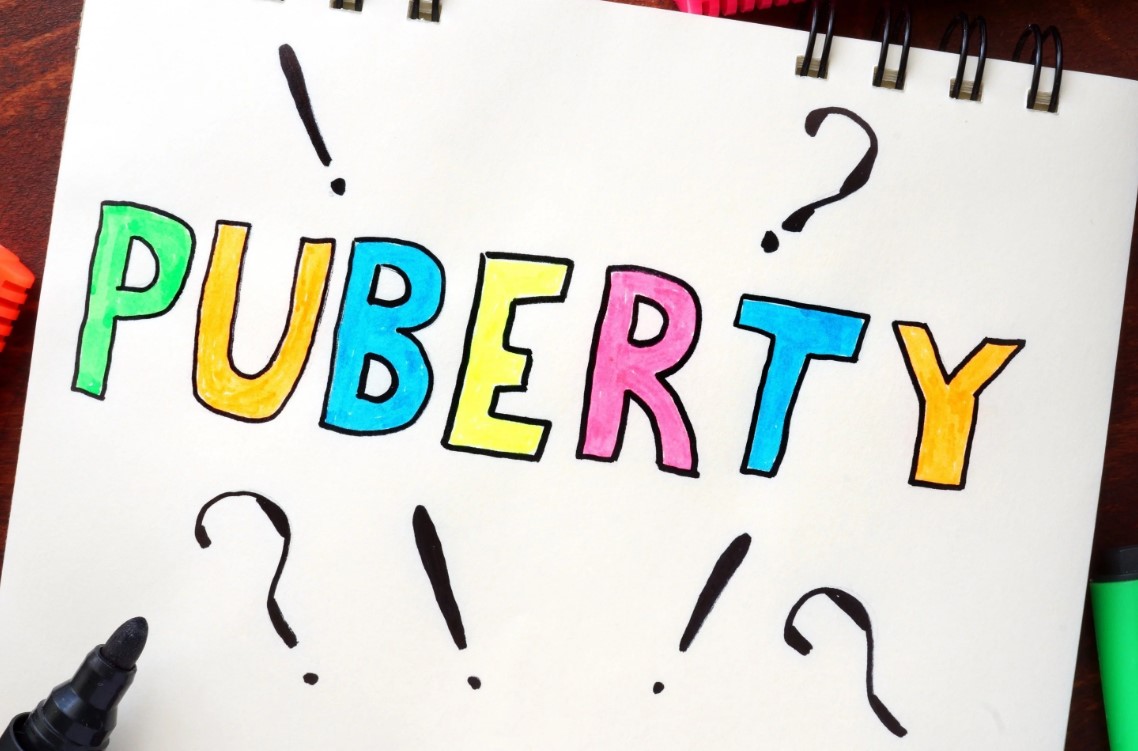Puberty is a characteristic cycle that denotes the progress from youth to adulthood. It’s a period of critical physical, close to home, and hormonal changes that set up the body for propagation. While Puberty is much of the time considered something that happens once during youth, many individuals experience what is called second adolescence. In this article, we’ll investigate the various phases of Puberty, what occurs during this time, and how the experience might contrast for guys, females, and the people who experience early or gifted Puberty.
What Is Puberty?
Puberty is the cycle through which a youngster’s body goes through physical and hormonal changes that outcome in sexual development. Puberty by and large beginnings between the ages of 8 and 14, with young ladies frequently beginning somewhat sooner than young men. These progressions incorporate the advancement of optional sexual attributes like bosom improvement, feminine cycle, and developing of the voice, among others. It’s fundamental to comprehend the various phases of Puberty to actually explore these changes.

The Puberty Stages for Males and Females
The two guys and females experience puberty, however the actual changes they go through contrast in view of sex. For guys, puberty frequently includes the development of the balls, expanded bulk, and the advancement of facial and body hair. For females, puberty regularly starts with bosom advancement, trailed by the beginning of feminine cycle.
Puberty Stage for Males
The puberty stage for guys includes a few key turns of events:
- Development spray: During puberty, guys experience a huge expansion in level and weight.
- Testicular development: The testicles expand, and sperm creation starts.
- Voice extending: The larynx develops, making the voice become further.
- Facial and body hair: Pubic, underarm, and beard growth start to show up.
- Expanded bulk: Testosterone builds, prompting more strong turn of events.
What is Second Puberty?
While puberty for the most part happens in early youth, a few people experience what’s alluded to as second puberty sometime down the road. This term frequently alludes to changes that can happen in adulthood, like those connected with chemicals, maturing, or huge way of life changes. For instance, people might encounter a change in body sythesis, expanded muscle to fat ratio, or changes in voice or skin surface. It’s fundamental to comprehend that subsequent puberty isn’t equivalent to the puberty stage for guys or females in pre-adulthood, however it can in any case include comparable physiological changes.

Precocious Puberty: When Puberty Occurs Too Early
Bright Pubescence alludes to the beginning of adolescence at an uncommonly early age. While Pubescence regularly starts between ages 8 and 14, gifted adolescence can begin as soon as 5 or 6 in certain youngsters. Young ladies are bound to encounter this beginning stage than young men. The actual changes related with bright adolescence reflect those of normal Pubescence, for example, bosom advancement and the beginning of feminine cycle for young ladies and beard growth and developing of the voice for young men. In any case, early adolescence can prompt profound and mental difficulties, so it’s vital to look for clinical counsel assuming indications of gifted Pubescence are seen early.
Factors That Affect Puberty Onset
A few variables impact when and how Pubescence starts. These incorporate hereditary qualities, ecological elements, sustenance, and wellbeing status. For instance, youngsters who are undernourished may encounter postponed Pubescence, while the people who are overweight or fat could encounter a prior beginning of Pubescence.
Genetics and Puberty
The age at which somebody starts Pubescence still up in the air by hereditary qualities. In the event that guardians or kin experienced early or late pubescence, there’s a decent opportunity that the singular will follow a comparable example. Hereditary variables can likewise impact the speed of improvement during Pubescence, including how rapidly optional sexual qualities arise.
Environmental Factors
Natural elements, like openness to endocrine-upsetting synthetics, can likewise influence the planning of Pubescence. Research has shown that specific synthetic substances in plastics, beauty care products, and food bundling can impede chemical creation, possibly prompting early or postponed Pubescence.
Nutrition and Puberty
Nourishment assumes a vital part in the planning of Pubescence. Concentrates on show that kids with satisfactory nourishment, particularly those with an adequate admission of sound fats and proteins, will generally enter Pubescence prior. On the other hand, hunger or lacking calorie admission can postpone adolescence.
Early Puberty: Causes, Symptoms, and Treatment
Assuming that you suspect that your kid is encountering early Pubescence, it’s fundamental to talk with a medical care supplier to distinguish the hidden reason and examine potential therapy choices. Early Pubescence can be brought about by various variables, including hormonal awkward nature, hereditary circumstances, or mind problems that influence the nerve center or pituitary organs.
Side effects of early Pubescence might include:
- Advancement of bosoms in young ladies more youthful than 8
- Testicular augmentation in young men more youthful than 9
- Quick development in level followed by a suspension of development at an early age
- Early appearance of pubic hair

Treatment Options for Early Pubescence
Treatment for early Pubescence normally centers around stopping or dialing back the movement of Pubescence to take into consideration legitimate development and improvement. Prescriptions, like GnRH analogs, are many times used to impede the chemicals that trigger Pubescence. Now and again, medical procedure might be important assuming that there is a fundamental ailment.
Puberty and Mental Health: Navigating the Emotional Changes
Notwithstanding actual changes, Pubescence likewise brings critical close to home and mental difficulties. Young people might encounter temperament swings, tension, or even gloom because of hormonal changes. Guardians and parental figures genuinely should offer profound help and direction during this time.
Pubescence and Self-Esteem
For the vast majority youngsters, Pubescence can be a period of weakness and hesitance. As their bodies change, they might have an unsure outlook on their appearance or capacity to find a place with their friends. Empowering open correspondence and supporting a solid self-perception can assist with helping certainty during the difficulties of Pubescence.
Pubescence for Males and Females: Emotional Differences
While the two guys and females experience profound changes during Pubescence , the experience can contrast. For instance, young adult young ladies might be bound to encounter state of mind swings and profound trouble because of the fast changes in chemical levels. Young men, then again, may battle with cultural assumptions for manliness, which can prompt disarray and disappointment as their bodies change.
Tips for Navigating Pubescence
Here are a few hints for guardians and parental figures to assist youths with exploring Pubescence:
- Provide emotional support: Be there to tune in and offer direction when required.
- Encourage healthy habits: Advance great sustenance, exercise, and rest.
- Normalize changes: Make sense of that pubescence is a characteristic piece of growing up.
- Seek professional help if needed: On the off chance that profound or actual issues emerge, look for guidance from a medical care supplier.
Conclusion
Pubescence is a mind boggling and special experience for everybody. Whether it’s the second adolescence in adulthood, gifted Pubescence, or the average formative cycle, understanding the progressions included can assist people and their families with exploring this stage with certainty. From the Pubescence stage for guys to the close to home moves that go with pre-adulthood, it’s critical to move toward Pubescence with information, persistence, and backing.
Read More Please Visit Our Website Click Here

